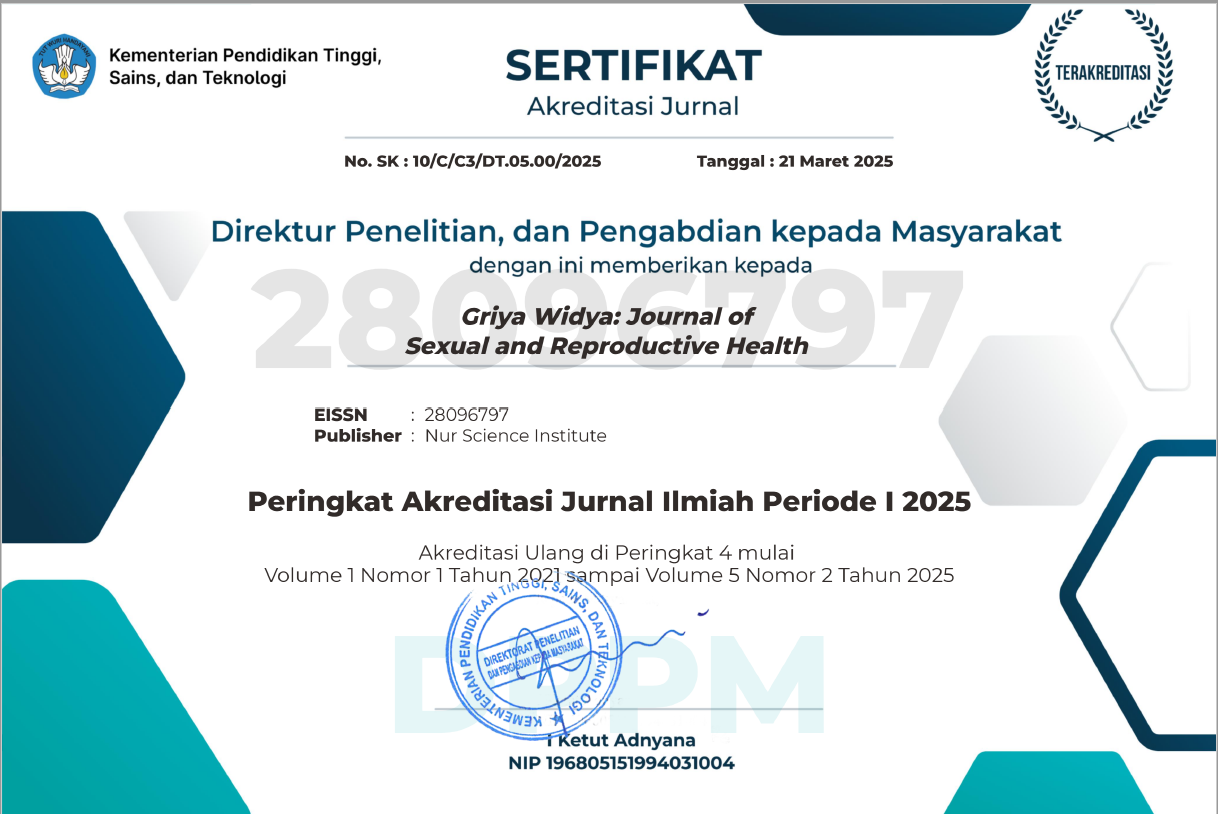Kondom Dipasang, IMS Berkurang
Gambaran Penggunaan Kondom pada Wanita Pekerja Seks Resosialisasi Argorejo
DOI:
https://doi.org/10.53088/griyawidya.v2i1.588Keywords:
Female Sex Worker, Condom, STI, Red-Light DistrictAbstract
Background: The purpose of this study is to reveal the description of condom use behavior related to the incidence of STIs (Sexually Transmitted Infections) among FSW who are in Argorejo Resocialization (Sunan Kuning).
Method: This research is a qualitative descriptive research. The type of data analyzed in this study was secondary data, the secondary data was obtained from the Griya ASA Clinic documents contained in the 2012 patient routine visit book. The analysis was carried out on 32 FSW who were in the Argorejo resocialization who were recorded as having routine screening at the Griya Clinic ASA. The independent variable is the use of condoms in the last week for FSW and the dependent variable is the diagnosis of FSW. Data analysis was performed using Univariate analysis.
Results: The data above shows that FSW who admit to always using condoms are more likely to get STIs than those who only occasionally. From that arises the assumption that there may be a lack of knowledge about how to use condoms. Based on the data obtained from 32 respondents there was no significant difference because the sample was too small, the sample used was only people who routinely checked themselves at Griya ASA Clinic and only 32 respondents, so it could not represent the FSW population in Argorejo Resocialization Sunan Kuning has a population of 719, so the sample used is not representative and the results are not valid.
References
Aral, S.O., J.S., Thikonova, L Safarova E., Parker., K.A Shakarishvili, A,. Ryan C.A. (2003). The Social Organization Of Comercial Sex Work In Moscow, Russia. Sexually Transmited Diseases Journal. 30 (1)
Arifianti . N.A., Pietojo, H., Priyadi. N.P. (2008). Analisis Faktor-Faktor Penyebab Niat Wanita Pekerja Seksual Yang Menderita IMS Berperilaku Seks Aman (Safe Sex) Dalam Melayani Pelanggan. Jurnal Promosi Kesehatan, 3 (2): 102-114
Bambang. (2008). Infeksi Menular Seksual. Jakarta: Yayasan Bina Pustaka. (Bagian Kedua MK 17- MK 21).
Basuki, E., et. al (2002). Reason For Noi Using Condom Among Famele Sex Workers In Indonesia AIDS Education And Prevention 14 (2): 102-116
Choiriyah.F dan Kriswiharsi.k. (2013). Faktor-Faktor Yang Berhubungan Dengan Kejadian Infeksi Menular Seksual (Ims) Pada Wanita Pekerja Seksual (Wps) Usia 20-24 Tahun Di Resosialisasi Argorejo Semarang. Jurnal Kesehatan.Vol 2.No3
Kemenkes RI. (2014) Profil Kesehatan Indonesia Tahun 2014. Jakarta: Kementerian Kesehatan RI
Nurkholis, A B Istiarti T Syamsul Huda B.M. (2008). Faktor-Faktor Yang Berhubugan Dengan Praktek Wanita Pekerja Seksual (WPS) Dalam Upaya Pencegahan IMS Dan HIV/AIDS Disekitar Alun-Alun Dan Cndi Prambanan Kabupaten Klaten. Jurnal Promosi Kesehatan , 3 (2) : 120-126
Widyastuti, Y. (2009). Kesehatan Reproduksi . Yogyakarta: Fitramaya.
Downloads
Published
How to Cite
Issue
Section
License
Copyright (c) 2022 Choiri, Kiki Olgavianita, Guruh Prayoga, & Rima Meilani

This work is licensed under a Creative Commons Attribution-ShareAlike 4.0 International License.
Authors who publish with this journal agree to the following terms:
The author(s) retain copyright and grant the journal the right of first publication with the work simultaneously licensed under a CC BY-SA 4.0 license that allows others to remix, adapt, and build upon the work even for commercial purposes, as long as they credit the author(s) and license their new creations under the identical terms.
License details: https://creativecommons.org/licenses/by-sa/4.0/



